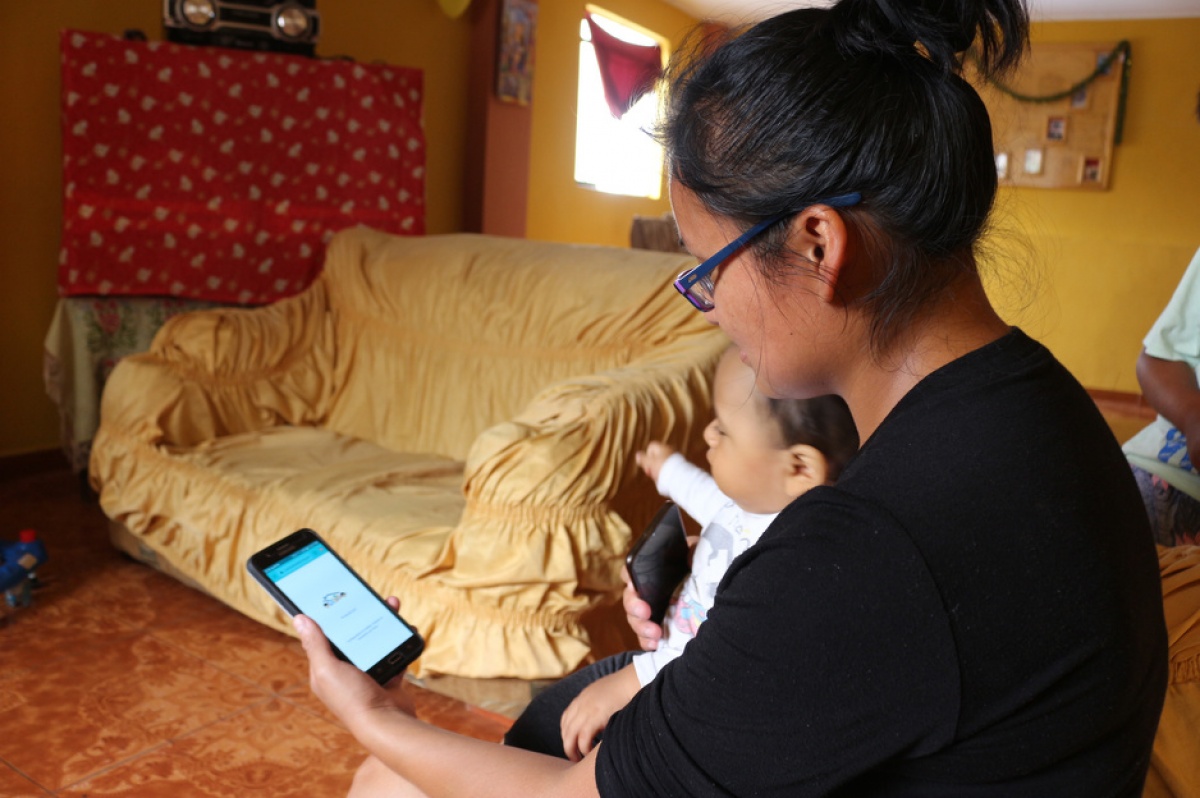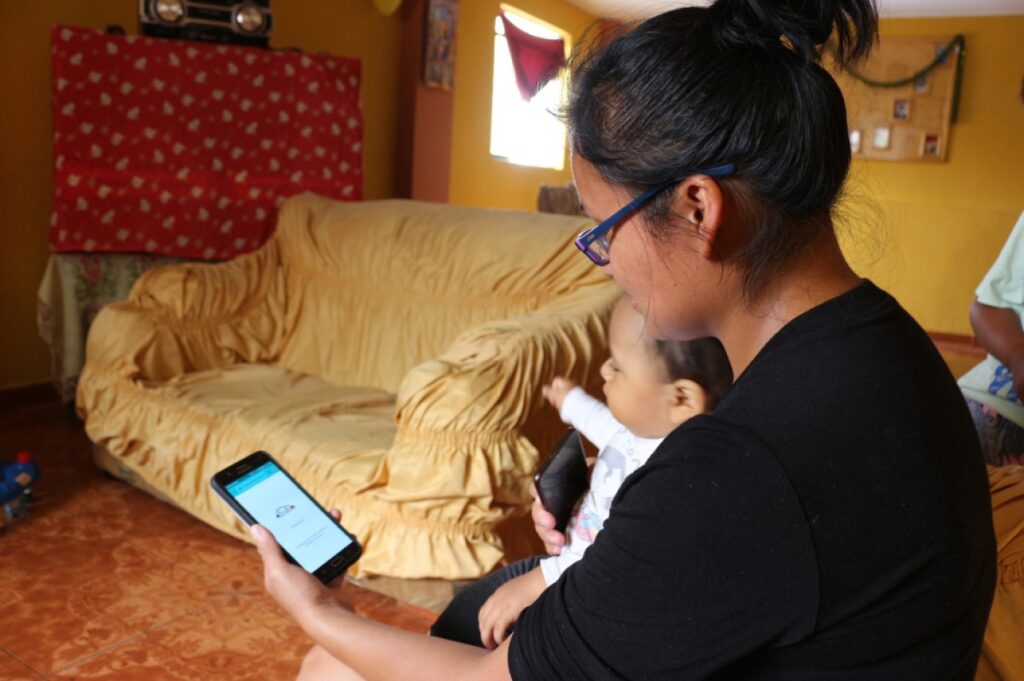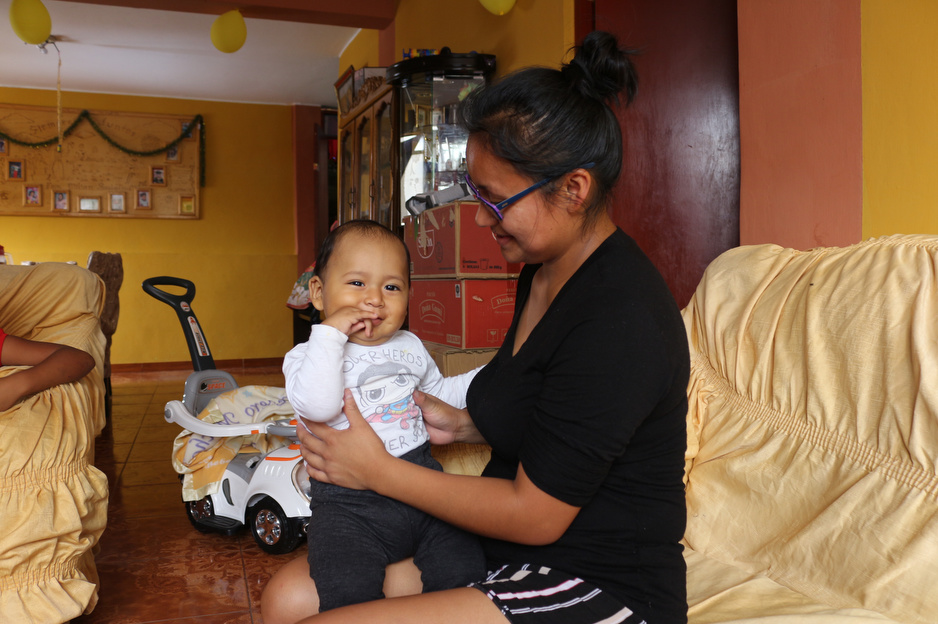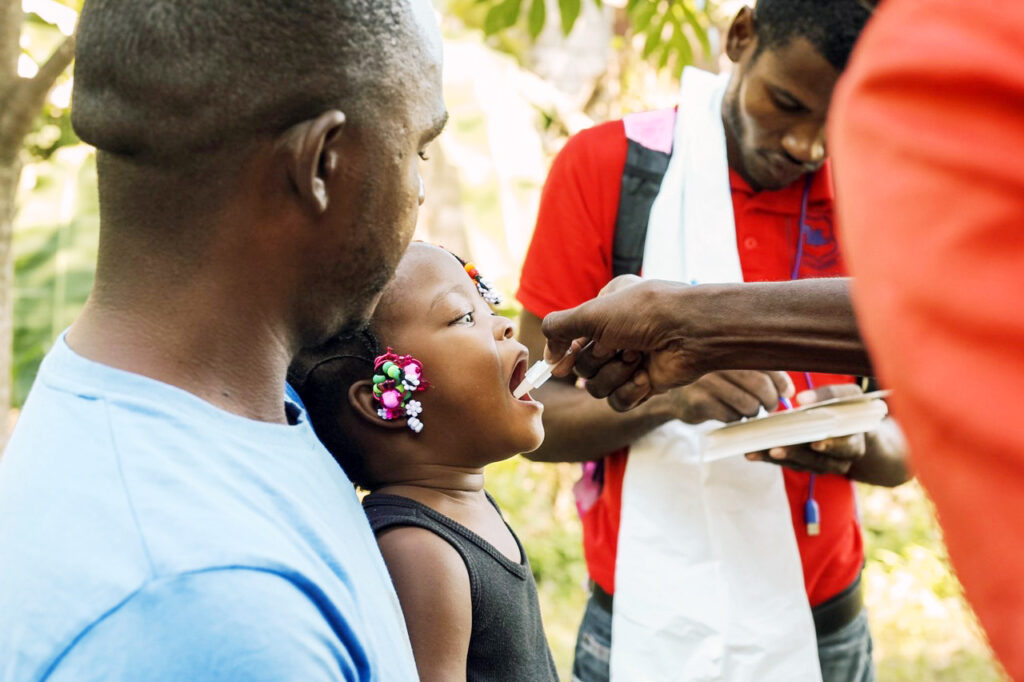Telehealth Apps Connect Patients With Care In Peru

Chatbots improve access to variety of care amid COVID-19
Posted May 5, 2021

As a young mother faced with parenting during a pandemic, Sol Prieto worried about her 9-month-old and whether he was hitting all the milestones in child development. They spent all day at their house in Carabayllo, Peru. She wondered if it was coming at a cost.
“Since I became a mother, I have always been very interested in and concerned about the well-being of my little one,” she says.
Fortunately for Prieto, the 26-year-old mother was not left to face these challenges alone. Support came from an unlikely place: a telehealth app.
The app is called CASITA, and it’s one of seven telehealth apps developed by Socios En Salud, as Partners In Health is known in Peru. These apps vary in focus, but all have a common goal: to help patients connect with care during the pandemic.
Quality Care, At Home
Socios En Salud has worked in Carabayllo, an impoverished community 20 miles north of the capital of Lima, since 1994, when it responded to a deadly outbreak of multidrug-resistant tuberculosis. Then and over the decades since, SES has partnered with Peru’s Ministry of Health to deliver medical care and social support, strengthening Carabayllo’s health system.
When COVID-19 struck, Socios En Salud was ready to respond with testing, contact tracing, and resources for those in quarantine, drawing from its deep experience fighting TB. It also adapted its clinical programs to keep patients safe, shifting to a virtual format whenever possible—a shift that called for technological innovation.
That’s where telehealth came in. As cases mounted and virtual programming became a necessity, Socios En Salud developed seven mobile apps, corresponding with ongoing clinical programs. All of the apps connect patients with a chatbot—and, eventually, care—from the comfort and safety of their homes.
“Chatbots are an alternative to provide tele-advice and tele-monitoring in health and to connect people at risk of a health problem with health professionals,” says Karen Ramos, director of Socios En Salud’s community health program. “Chatbots allow us to accompany and follow-up at a distance and allow the participant to have an alternative response to their health problem.”
Some of the apps focus on mental health, such as Bienestár, which offers a free screening and connects patients with a network of specialized psychologists. KUSKA follows a similar model, but in Quechua, an Indigenous language that can be a barrier to quality care for Peru’s historically marginalized Quechua communities.
Other apps focus on chronic diseases. Soy Qhalikay helps identify people at risk for Type 2 diabetes or hypertension and alerts a nursing and nutrition team for follow-up. Chatea con tu Nutri connects patients with health professionals to improve their diet and physical activity.
Still other apps focus on maternal and child health. ALMA enables women at risk for breast cancer to access a free preventative mammography. And GESTamor helps identify women who may be pregnant and refers them to a health facility for prenatal care and monitoring.
A Patient-Centered Approach
For Prieto, it was an app called CASITA that made all the difference. Connected to Socios En Salud’s CASITA program, the app offers a free screening, educational resources, and, if needed, enrolment in the program, which identifies infants at risk for developmental delays and provides training and support for their caregivers.
Prieto first heard about CASITA from her neighbour, whose family is enrolled. After speaking with a Socios En Salud community health worker, she decided to give the app a try. As she spent her days at home with her son, she wanted to know whether he was showing any signs of developmental delays.
When she logged on, the chatbot asked a series of general questions about her and her child. Then, it shared information about the stages of child development, including pictures, and asked more targeted questions about her child’s behaviors.
As she answered the questions and saw the pictures of children—pictures that resembled her son—she felt a sense of relief.
“Through the CASITA chatbot app, I was able to rule out signs of delay or risk in his child development,” she says.

Over the past several months, Socios En Salud’s telehealth apps have helped hundreds of people like Prieto access education, resources, and support—including those previously unserved. The Bienestár app, for example, has helped identify more than 111,540 people in need of mental health support—enabling Socios En Salud to connect them with psychologists and specialized care.
The process has had its challenges. Most of Socios En Salud’s community health workers are women over 50 years old who may not have had technological savvy—at least, before the pandemic.
“They have had to learn and adapt to the use of chatbots, messaging, and video calls through WhatsApp and other applications,” says Ramos. “This pandemic has allowed them to explore their abilities and know that, regardless of their age, they can continue to learn new things that strengthen their abilities.”
As a young mother, learning new things has been a constant for Prieto. But she knows she’s not alone.
Just the other day, she watched her son try to sit up on his own—another sign of progress, one that she recognized from the CASITA app.
“I feel much calmer now,” she says. “I want to create a healthy space for the development of my youngest son. I always keep an eye on him, so that he can be healthy and happy.”
Article originally published on pih.org



